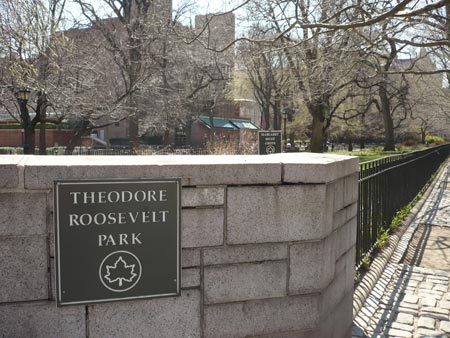
"The nation behaves well," Roosevelt wrote (in The New Nationalism 1910), "if it treats the
 natural resources as assets which it must turn over to the next generation increased and not impaired in value." City parks help in a modest way towards this goal by reminding us, as we go about our concrete-and-metal city lives, that we're still products of—and embedded in—nature. As manicured as this lawn and these trees may be, it's a net positive that groups of students visiting the Museum can walk through a park on their way there.
natural resources as assets which it must turn over to the next generation increased and not impaired in value." City parks help in a modest way towards this goal by reminding us, as we go about our concrete-and-metal city lives, that we're still products of—and embedded in—nature. As manicured as this lawn and these trees may be, it's a net positive that groups of students visiting the Museum can walk through a park on their way there.
This majestically twisted ent has seen generations of school groups headed for the dinosaurs, the Hall of Mammals, the great dioramas, and the planetarium.
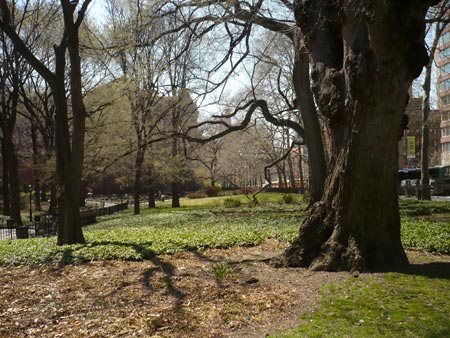
Way back in 1807, long before the creation of the Museum, the area had been designated as a public park and was at one time considered for the site of a botanical garden or zoo.
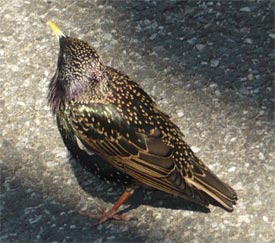 In a way, it became both, though the Museum's plant and animal specimens are mostly not among the still-living.
In a way, it became both, though the Museum's plant and animal specimens are mostly not among the still-living.The Park was officially named for T.R. in 1958.
Wildlife? Sure. This starling seems content with life, even if it is pavement life. And these domesticated wolves seem to be enjoying the Bull Moose Dog Run, named after T.R. as well—or after the third party formed by the former President after his split with successor William Howard Taft. The Progressives were so identified with T.R. they took on the nickname "Bull Moose Party," after the ex-Prez called himself "fit as a bull moose" after surviving an assassination attempt.
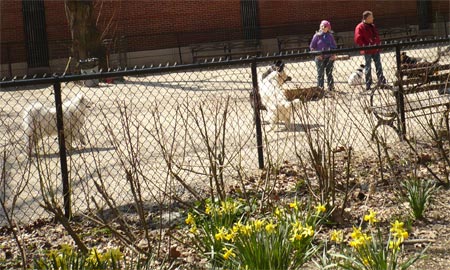
All of this is north and west of the Museum, but the park circles around to the south as well, where you can have a snooze by this nice fountain:
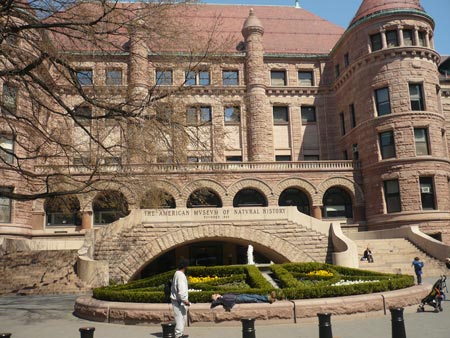
So next time you're up by the American Museum of Natural History, or just walking near Central Park, spare a few minutes for the Museum's very own belt of greenery: Theodore Roosevelt Park.
If it's daytime, you're sure to spot some flocks of young homo sapiens, delivered via Magic Bus.
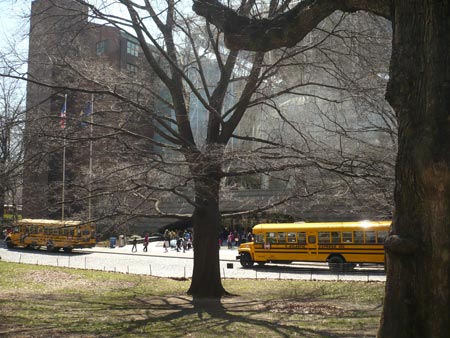
No comments:
Post a Comment